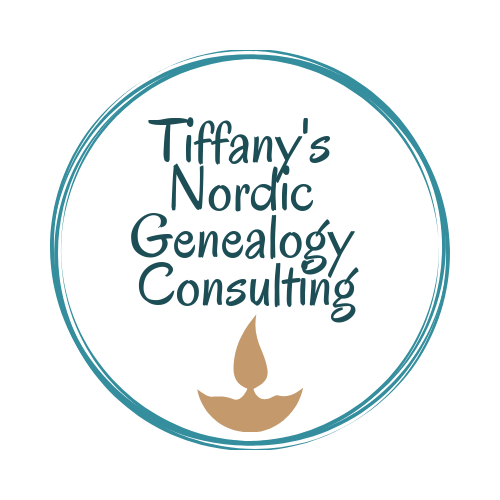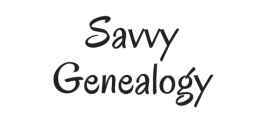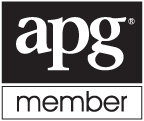
How Can I Use Norwegian Censuses in my Research?
Hi readers! I’m playing around with different logos and how they look on my blog. So bear with me as you might see many different images on my posts.
How is this weather treating you in your area? Over here, the weather is finally getting that crisp fall feel that I love! The perfect fall weather is crisp, sunny, and no wind. That’s when I’m the happiest. Then I let myself dream of jumping into leaf piles with my daughter, carving pumpkins, drinking apple cider, and wearing my favorite fall fashions. I still need to set a date for our family pumpkin carving tradition and I’m still waiting for our tree to let go of its leaves, but I can still dream right?
Have you ever dealt with Scandinavian Census records? Are they easy to understand for you or do they just confuse you and make you feel like giving up?
Today we’ll be talking about Norwegian census records because that’s the next logical step in our journey. I usually like to find the whole family in the census records first so that I know when the first child was born. The parents generally married within one to two years before the first child was born. Therefore, in the case of Johanna Krogh, since I only have her Norwegian birth record and no other documents for her family, then I would look in the census records for the rest of the family. It makes for a more efficient research instead of taking more time going page by page. Once I find the family in census records, then I can jump back to marriage records to find more information on the parents.
Things that we already know that will help us find censuses.
1. Johanna was born 1893 in Vikedal.
2. Parents-Johannes Kolbensen and Gjertrud Sjursdatter
3. Residence-Stolsmark farm in Vikedal Parish
4. Parents estimated birth years- Johannes 1832, Gjertrud 1847
Next we need to learn the history of how the census was taken in Norway. Again, FamilySearchWiki or Google will be your best bet in learning the history of censuses. I’m not going to go into a lot of detail here; however, in this article Norway Census, it describes each census taken in Norway and what information you’ll find on each census. It’s a very well written article and I highly recommend you read it to educate yourself on Norway censuses. There’s even a link under the “Searching Census Records” section that will take you to an article written by a Norwegian Professional Genealogist, Liv Andersen, that explains more of the practical tips of searching censuses. The article uses the old version of the Norwegian Digital Archives, but the procedure is still the same.
Some of the basics that you need to know right now about their censuses are
The records are incomplete.
The names could be misspelled or not as complete as found in the church records.
Ages could be incorrect.
Information may be incorrect.
Place names and their spellings may vary.
If your family isn’t found at the expected address, then search the surrounding areas.
Basically, census records just like any other document is not set in stone. There may be incorrect information on it that needs to be verified using other documents. The more documents saying the same information, the more the information is correct.
Let’s start with the most current census record for Johanna. Since she was born in 1893, then we would look for the 1900 census. We are looking for her name and her parent’s names to be on the record to get the correct ancestor.
Here is the 1900 census…
Without going into too much detail about the translation of the title headings in this blog post, let’s look at what this census tells us about the family so far.
|
Name
|
Gender
|
Do you live at this location
|
Position in Family
|
Married or not
|
Position or Occupation
|
Birth Year
|
Birth Place
|
Foreign or Native
|
Religion
|
|
Johannes Kolbeinsen
|
Male
|
Yes
|
Head
|
Married
|
Crofter, fisher-man
|
1834
|
Vike-dal
|
Native
|
State
|
|
Gjertrud Sjursdatter
|
Female
|
Yes
|
Wife
|
Married
|
Crofter’s wife
|
1848
|
Etne
|
Native
|
State
|
|
Sven Johannesen
|
Male
|
Yes
|
Son
|
Single
|
Farmer
|
1883
|
Vike-dal
|
Native
|
State
|
|
Johannes Johannesen
|
Male
|
Yes
|
Son
|
Single
|
Child
|
1887
|
Vike-dal
|
Native
|
State
|
|
Johanna Johannesdatter
|
Female
|
Yes
|
Daughter
|
Single
|
Child
|
1893
|
Vike-dal
|
Native
|
State
|
So from this census we learn that Johanna had two other siblings, they were all born in Vikedal except her mother who was born in Etne. Sven is old enough to have a job as a farmer while the other two aren’t old enough yet. The family has lived in Vikedal since 1883 because the oldest child was born there. They belong to the State church, which is Lutheran at this time.
So now I would go back to the 1891 census, see if there are more children living at home, and find out their information. I would then move to the 1875 census and do the same thing until I don’t find Johannes and Gjertrud as a couple on a census record. Then I would have a narrowed down marriage date and I could look for them in marriage records next.
Remember, just because you can’t find them in a census doesn’t mean they’re not there. Keep using different search techniques until you find them in that census. They may have a different spelling of their name or go by a middle name, etc. Give it your best effort before assuming they’re not in that census.
Norwegian censuses are very informative if you know how to search for them. Having their farm name or street name is essential when looking for them on censuses. In addition, having as much information as you can going into your search will make your census search much easier. Censuses allow us to see the family dynamics so that we can search for them in other records. It also allows us to see how they lived, where they lived, and what their conditions were. Even though census records were taken for tax purposes, these can be very helpful for genealogical purposes.
Have you had any good success with Scandinavian censuses? If so, let me know in the comments. I would love to hear your story.
Good luck and may the blessings of your hard work be seen!
Tiffany



